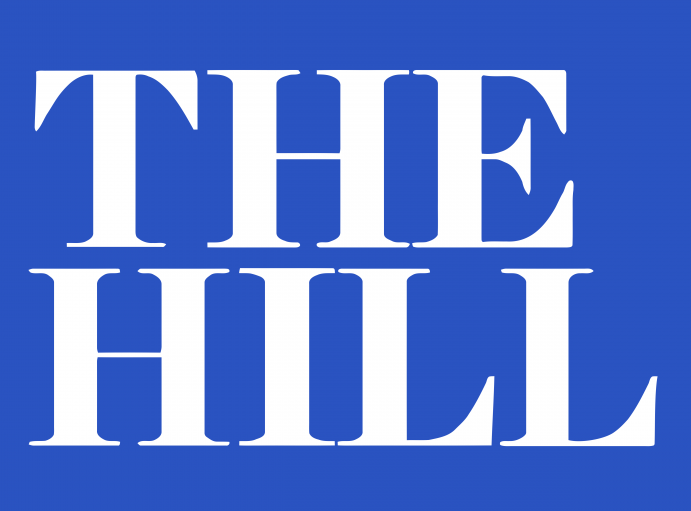We cannot change history, but we can explore different courses it might have taken.

We can learn from counterfactual history perhaps as much as actual history.
Imagine Booth had not shot Lincoln.
We cannot change history, but we can explore different courses it might have taken.

We can learn from counterfactual history perhaps as much as actual history.
Imagine Booth had not shot Lincoln.
The U.S. and key NATO members should occupy western Ukraine and establish a no-combat zone. They should take action despite Putin’s nuclear threats, and they should act immediately, because the window of opportunity is closing.
A full NATO occupation of western Ukraine would preserve a free and independent nation in the west, while diminishing chances of Ukrainian success in the east. Yet those chances seem low at present, despite President Zelenskyy's incredible leadership.
In order not to provoke Vladimir Putin into direct conflict with NATO/U.S. forces, it would have to be a two-sided no-combat zone, off limits to both Ukrainian and Russian aircraft and ground troops and the transit of arms supplies to Ukrainians fighting in the east. It could not be a protected zone from which Ukrainian troops and planes could launch attacks on Russian forces to the east.
Suspension of arms support for Ukrainian fighters in the east would be a bitter pill for President Zelenskyy. Yet in the absence of any NATO action, the crisis is likely to end in total defeat for Ukraine (and the U.S., NATO and the West).
The east-for-the-west dynamic might offer a welcome off-ramp to Putin who has bitten off a lot, if not too much, to chew.
On the first day of his invasion of Ukraine, Russian dictator Vladimir Putin warned Western nations not to intervene lest they face “consequences greater than any you have faced in history.” Three days later, Putin put Russian nuclear forces on some kind of elevated status.
No nations are intervening.
Five days into the war, Putin launched a long-range missile with near-nuclear destructiveness. What looked like a thermobaric missile hit Freedom Square in the center of Kharkiv, Ukraine’s second largest city.
Putin’s nuclear threat has succeeded in scaring off the West, allowing him to employ non-nuclear weapons that are nearly as horrific.
While the West cannot ignore the risk of a nuclear confrontation, it should not be frozen by fear of it in face of Putin’s monstrous acts, those already committed and those in prospect.
With his invasion of Ukraine, Putin has changed the Post-World War II strategic calculus. Until now, nuclear powers have followed the rationale of mutual assured destruction (MAD), namely that, if no one can survive nuclear war, much less win it, then no one will engage in it or even threaten it. This reality has served to channel military confrontations into conventional warfare for three-quarters of a century.
Putin has changed that. He is using nuclear threats and blackmail to create an umbrella under which to conduct one-sided conventional warfare, with his threats immobilizing any conventional military response by opposing nuclear powers.
State governments can do many things with the federal aid they received under last year’s $1.9 trillion American Rescue Plan (ARP). One thing they are expressly prohibited from doing is pouring that money into pensions for well-paid public employees. Connecticut is doing it anyway.

Gov. Ned Lamont’s just-released $48 billion two-year budget proposal funnels $2.9 billion in special deposits into the state employee and teacher pension funds. This is an amount equal to the federal aid the state received under ARP. These special deposits are over and above CT’s regularly scheduled $7.2 billion in state contributions to the two retirement systems.

Mr. Lamont outlined his plan for the federal stimulus money in February 2021, before ARP became law. “If additional federal aid for state and local governments is not enacted,” Lamont's budget proposal last year read, the state would draw down its rainy-day “budget reserve fund” (BRF) to fund its budget. But if “unrestricted” federal assistance came through, the state would use that money—rather than the BRF—to shore up the general budget. That would leave the BRF overstuffed. Under state law, when the BRF exceeds 15% of the annual budget, the excess must be moved into the pension funds.
In the early days of COVID, the key objective was herd immunity. Today, we are there, or very nearly so. We should declare victory. It has been a costly victory. It may be a Pyrrhic victory, unless we pivot rapidly from COVID to the economy.

It is time to address the economic damage wrought by the wholesale shutdown of the economy in response to COVID. At the outset, many observers, including this writer, expressed grave reservations about the shutdown.
The national debt has increased $5.3 trillion, or more than 30%, during the pandemic.
The suburban myth of a mass exodus from a virus-plagued New York City to the supposedly safe environs of Connecticut died with the recent release of Census Bureau interstate migration data.

While New York State lost over 400,000 residents to other states from April 2020 to July 2021, Connecticut attracted a mere 226 net new residents from other states. Incoming New Yorkers passed fleeing Nutmeggers.
And that’s the good part. Connecticut’s labor force plummeted by 100,000, or more than 5%, from February 2020 through November 2021, according to the U.S. Bureau of Labor Statistics. Only two state workforces contracted more.
It is darkest before dawn. COVID is surging, particularly in the Northeast. Yet, it is not a wild-eyed prediction to say that this will be COVID’s last gasp. While the virus will be around for a long time, it will cease to be a serious threat.

Why? Because of vaccines and because of two relatively unheralded medical advances.
Biden Administration generals are fighting the last war. Last Thursday, they mandated that large businesses and health care facilities require that their workers get vaccinated for COVID-19.

The next day, Pfizer announced an antiviral pill to treat the virus. Pfizer’s pill is 89% effective. A Merck antiviral pill for COVID-19 (with only about 50% effectiveness) is already in use in Britain.
COVID-19 treatment pills destroy any vestige of logic or justification for Biden’s vaccine mandates.

No matter how someone contracts the virus, these pills prevent serious illness – hospitalization and death. With double lines of defense against the coronavirus – vaccination, and, now, these new antiviral treatment pills – mandates have become unnecessary.

Last Saturday, the Fifth U.S. Court of Appeals issued an emergency stay of the Biden business mandate, saying it raises “grave statutory and constitutional issues.”
Quite apart from the legal issues, the mandates ignore science and logic. The logic of vaccine mandates has always been weak and self-contradictory insofar as their implied purpose of protecting vaccinated people from unvaccinated people. If vaccines are effective (95% effective in Pfizer’s case), then, vaccinated people face little risk from unvaccinated people.

If the vaccines are ineffective, then why should anyone get them?
President Biden has issued a flurry of executive orders related to climate change, including one designating climate change a national security threat andone rejoining the Paris Accord.
The primary security threat by this new climate-change name looks the same as the leading national security threat in traditional terms: China. The totalitarian Communist dictatorship is responsible for almost 30% of global greenhouse gas (GHG) emissions.
China’s emissions are not only the world’s most, but they are increasing every year. U.S. emissions are about half as much and have been decreasing for over a decade.
President Trump finalized a "most favored nation (MFN)" or "best price," prescription drug pricing rule on Nov. 20. The goal of the MFN concept is to deliver fair drug prices to Americans. The MFN best-price concept mandates the same price for Americans and wealthy Europeans, who have been paying about one-third of what Americans pay. It does so by empowering Medicare to require drug sellers to give it the "best" (lowest) price charged any other buyer.

The MFN construct does not diminish drug company profits, which fund critical R&D and discovery of new life-saving drugs. The concept does not impose government-set prices upon drug manufacturers, who would be free to set whatever price would maximize sales and profits.
While there is controversy as to whether the just-finalized rule genuinely implements the concept, the MFN approach should be followed. Opponents of the rule should work to improve it, not oppose it.